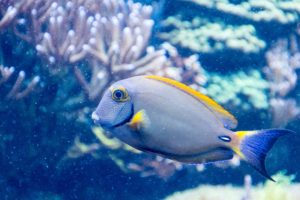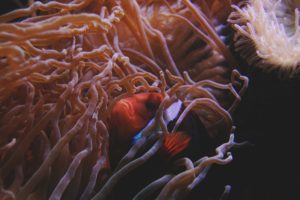In the fishkeeping hobby, it is quite common to hear the terms F0, F1, F2, and so forth from fishkeepers in their conversations. This alphanumeric designation is used in relation to a fish being wild caught or captive bred. This F generation classification system is very easy to understand and can be a lot of help when seeking information about fishes. It categorizes the filial generation of a fish.

Basically, F0 is the alphanumeric symbol used for wild caught fish. No other symbol is assigned to wild caught fish, so all wild caught fishes are considered F0. To further clarify, a wild caught fish is a fish caught from its natural water system and not bred in an aquarium, pond, or farm. Thus a Janitor fish, the Hypostomus plecostomus caught in its natural waters in the Amazon, is considered F0; however, the H. Plecostomus caught in the Pasig River may not be considered wild caught since the Pasig River is not its natural habitat; therefore, Janitor fish caught there cannot be designated as F0. Although it is back in the wild, it is an introduced species which has the potential to be an invasive species.
An F0 fish that was caught in its local waters and purchased by a fishkeeper who then keeps it in his aquarium is still an F0 fish. If these F0 fishes happen to breed, then their offspring are considered F1 and are now considered captive bred. If these F1 fishes happen to breed, then their offspring are called F2. The number increases as the next generation is born. This alphanumeric system denotes the generation or generations it is removed from the original F0 parents.
This filial generation classification system has its own merits and it affects the fish-keeper in many ways. It is not merely a term that fish-keepers use loosely; rather, it has valid and important uses in the hobby.

Certification
The most common use of this system is with regards to the certification of Arowana. As everyone knows, whenever you buy an Asian Arowana (Scleropages formosus), it has a corresponding certificate that goes with the purchase. This certificate is usually worded this way: “This Dragon Fish or Arowana (Scleropages formosus) bearing the tag number XXXX is of Second Filial Generation (F2) and beyond, produced through captive breeding.”
This certificate authenticates that this specific Arowana, as identified by a microchip imbedded in it, is a captive bred specimen and not wild caught. This authentication is important because the Asian Arowana, whatever variant it may be—whether Super Red, Crossback, High Back Redtail Golden, Redtail Golden, Banjar, or Green—is listed in the appendix of CITES (the Convention on International Trade in Endangered Species of Wild Fauna and Flora) as endangered.
The trading of wild caught Asian Arowana is strictly prohibited. Contrary to what others think, the certificate is not a document attesting to the quality of the Arowana or the prestige of the farm. The certificate guarantees that the Asian Arowana you are buying is captive bred by that particular farm and is legal to own.
On the other hand, this in a way explains why the Silver Arowana (Osteoglossum bicirrhosum) does not need a certification for its trade. Since it is currently not listed on any CITES appendix and therefore is not a protected species, international trade of wild caught or captive specimens is allowed.
Identifying Man-Made Fishes
The filial generation classification system also explains that some fishes do not occur in the wild, but are man-made for the sake of the industry. The Parrot Fish, Flower Horn, Short Body or Balloon fishes, and many albinos are all products of captive breeding and are never F0s. They are never found naturally in the wild. Thus no one in their right mind can claim that their Flower Horn is F0. Again, if the Flower Horn is caught in a river—and I have heard that some Flower Horns have been caught in the rivers of Pampanga—they are not considered F0s.
Selective and line breeding, and to some extent, cross breeding and hybridization, are done by fish farmers to develop new varieties of fishes for the ornamental industry. These, of course, are all captive bred and are considered F1 and beyond.

Fishkeeping has long been an industry and people have learned to breed fish for ornamental use. In fact, the goldfish is a centuries-old favorite. The development of today’s goldfishes is the result of hundreds of years of captive breeding. Wild caught or F0 goldfish (Carassius stratus) look nothing like the goldfish we have today, but rather like dull-colored carp. In reality, present day goldfish may be called “F to the nth degree” because they have long been captive bred.
The same can be said for Koi. For centuries, the Japanese have been captive breeding them to come up with their brilliant colors and patterns. Their mastery has led to worldwide appreciation of Japanese arts, culture, and Koi keeping. Again, all Kois are F1 and beyond.
While captive breeding has improved some ornamental fish like goldfish and Koi, the inverse can happen if too much inbreeding occurs. This may be the case experienced by cichlid keepers. Since cichlids are quite easy to breed, sometimes, desirable traits are lost as the generations go further down the filial generation system. It is a fact that some cichlids have lost color and size due to too much inbreeding.
Impact on Collecting
Let’s take the case of the Green Terror (Aequidens rivulets). When the first ones arrived in the country in the 1990s, fish keepers were amazed by the big size and brilliant green color of the Green Terrors in the market. A decade or so later, with no new stocks entering the market, the Green Terrors being sold were smaller and duller in color. After too much inbreeding, the size and color of captive bred Green Terrors were affected.
Because of this tendency for captive bred cichlids to lose some desirable traits, some cichlid keepers prefer keeping wild-caught or F0 cichlids. This explains why, in group pages and forums dedicated to cichlids, the terms F0, F1, F2 and beyond are oftentimes used in their conversations more than with other fishes. It does matter to them since they are willing to pay more money for F0s than captive-bred cichlids. Similarly, F1s and F2s are attractive to some cichlid keepers because they are generally cheaper.
For some fish keepers who take their hobby to a different level, only F0 fishes are worth collecting. These hardcore fish keepers are purists who collect fishes as close to the wild as they can get. They spend a lot of time learning about wild caught fishes and are very choosy about their purchases. They even go through learning about the collection points of the fishes they pursue. They may pay a lot more so long as they are sure that what they purchase are good quality F0s; thus, they buy fishes only from trustworthy sources who have credible reputations.
In the Philippine setting, much emphasis has been given to F0 or wild-caught fishes. There seems to be a notion that F0 or wild-caught costs more, so sellers use the term more loosely. So long as we all have the same concept that F0s are wild-caught fishes while F1s and beyond are captive bred specimens and we know the implications of these, then we shall all be on the same page and have the same understanding.
This system is simple and should be as clear as black and white. If you read about someone selling an F0 Flower Horn or a wild-caught Arowana, there is something wrong with that statement. Don’t fall prey to sellers who try to impress you with their ads by claiming that their fish is F0 or F1. Know what these alphanumeric stand for and what their implications are, then you should be able to make a better judgement.
This story appeared in Animal Scene’s June 2017 issue.






